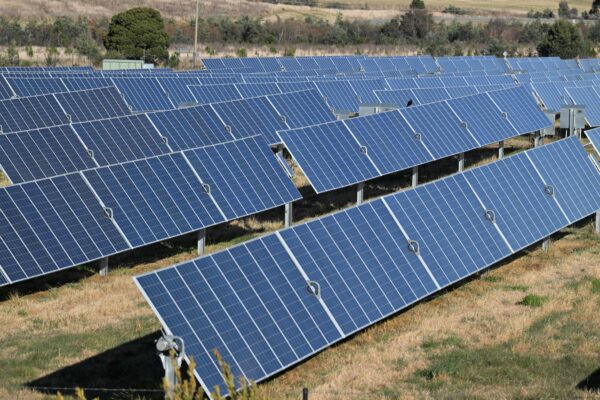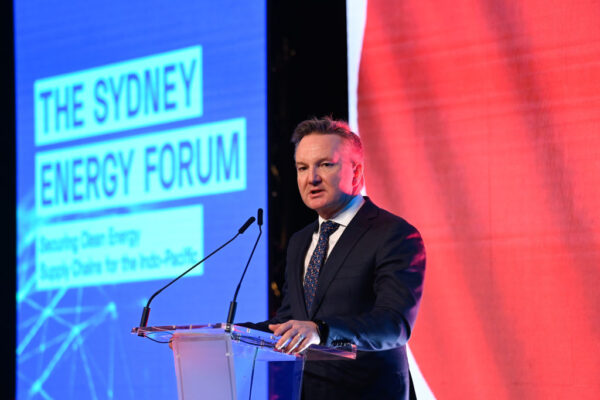Mining Billionaire Says Too Much Fossil Fuels Leading to Inflation
Mining magnate and former CEO of Fortescue Metals, Andrew Forrest, believes an overreliance on fossil fuels is to blame for Australia’s record-high energy prices.
In an interview with 2GB’s radio last week, Forrest declared that to combat high levels of inflation, Australia must swiftly transition to what he believes to be the cheapest form of energy available.
“The reason why we’ve got high energy prices and unreliable energy is because we’re relying on coal. The cheapest form of energy on the planet by a mile is renewable energy,” he said.
“If we rely on coal, it’s going to become savagely imperfect. Crossing over at speed being done through responsible people who are deep and heavy industrialists who have done this before and who want to employ tens of thousands of people is the responsible attitude to deliver the cheapest, most reliable form of energy the world has ever had.”
The comments come as domestic energy prices are forecast to increase even further, with the Australian Energy Regulator (AER) warning residential users to expect hikes of between 19.6 to 24.9 percent over the 2023-24 financial year.
The outlook for small businesses is even direr, with projected increases of 14.7 to 28.9 percent, depending on the region they operate in.
There are conflicting opinions on the true cause of sky-high energy prices.
Some Say ESG Causing Spike Inflation Spike
One argument says current corporate and federal environmental, social, and governance (ESG) policies are causing “greenflation,” that is, an exponential rise in prices stemming from the high cost of renewables as well as austere environmentally-driven mandates that restrict the affordable energy supply.
Further, an extensive supply of rare earth metals is needed to construct renewable energy infrastructure, namely solar panels.
This increased demand is causing prices to spike worldwide.

German Economist Isabel Schnabel, in a speech at the European Central Bank (ECB) conference, outlined why she believes ESG is spurring inflation.
“The movement to reduce greenhouse gas emissions in the production and consumption processes, indeed clean technologies, extensively require some metals such as copper, lithium, cobalt, and nickel,” she said.
“This very sharp acceleration in demand has a very big impact on prices in March 2022, the price of lithium had been multiplied by approximately 10 times since the beginning of 2020 and more than four for the price of cobalt.”
The demand for these metals isn’t just a result of their applications in the development of renewables.
Research undertaken by economists at Société Générale found that the lithium-ion battery in most electric vehicles requires around 25 pounds of lithium and 30 pounds of cobalt as well as vast quantities of nickel, copper, graphite, steel, and aluminium.
Others Argue for More ESG Policy
Advocates of ESG policies, including Forrest, are adamant that the current cost of renewable energy is purely a result of its minute share of the Australian grid and that as investment and supply increase, prices will take a dive.
Energy Minister Chris Bowen, upon his announcement of Labor’s energy policies within the budget, cited a study conducted by the CSIRO and AEMO this time last year revealing that wind and solar—if at a large enough scale—were the cheapest sources of energy generation available.
“This important report underlines the need for Australia and the world to invest heavily in renewable energy sources to put downward pressure on power prices,” he said.
“The government is determined that Australia will lead the way in reducing emissions, and this report shows that renewable energy is the most cost-effective way to achieve that.”

This sentiment does appear to have some merit.
Following Russia’s invasion of Ukraine last year, an International Energy Agency (IEA) report, in response to extreme fluctuations of prices in global energy markets, found that a greater share of renewables in domestic power grids correlated with lower electricity prices.
There is also the concern of profiteering by large international fossil fuel companies taking advantage of Putin’s illegal invasion of Ukraine and the restricted supply of gas.
Over the past year, for instance, leading international gas company Santos’ profits have tripled whilst their production levels have been maintained.
Meanwhile, Forrest also believes the green transition will solve this problem by ensuring a large enough domestic supply of renewables can sever Australia’s reliance on overseas and foreign-owned fossil-fuel energy providers.
“This is our one shot in the barrel to not have all of our coal-fired power systems made overseas, they are now. I want renewable energy to be made in Australia,” he said.
“Watch us, encourage us to be the biggest renewable energy creator, supplier, [and] maker in the world.”
Most of Australia’s solar panels are sourced from China, and wind turbines are from overseas conglomerates.




